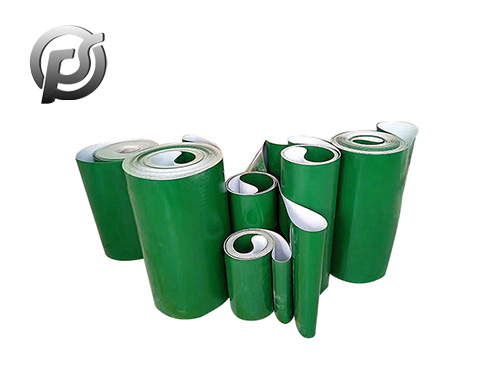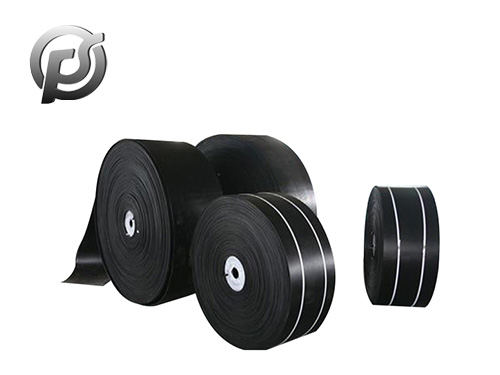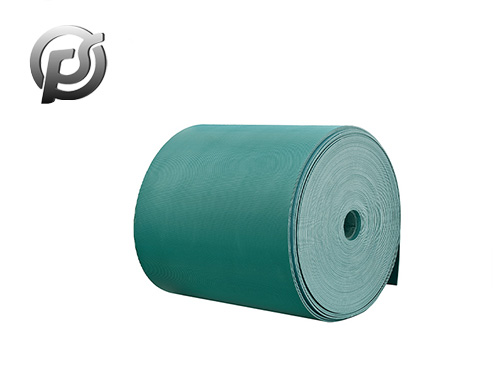Bucket elevator including belt bucket elevator, plate chain bucket elevator, chain bucket elevator and other several, is a kind of vertical lifting equipment widely used in agricultural processing plants and food bureaus, has the advantages of large lifting height, stability, small floor area and good sealing, suitable for lifting powder and small block materials.
The following are some common failures of the device during use
The hopper belt is slipping
(1) Bucket hoists use the frictional torque between the hopper belt and the head-wheel drive shaft to lift materials; lack of an ax to grind in the hopper belt will cause it to slip. At this time, the machine should stop immediately and adjust the tensioning device to tighten the hopper belt. If the tensioning device cannot make the hopper belt fully tensioned, it indicates that the tensioning device travel is too short, should be adjusted again.
The correct solution is to untie the hopper belt joint, adjust the tension device on the bottom wheel to the highest position, put the hopper belt in by the head of the hoist, pass through the head wheel and the bottom wheel, and connect the end to the end, so that the hopper belt will be tensioned but not tensioned. The tensioning device is then fully tensioned. At this time, the unutilized tensioning stroke of the adjusting screw of the tensioning device should not be less than 50% of the full stroke.
(2) hoist overload When the hoist is overloaded, the resistance moment increases, causing the hopper belt to slip. At this time should reduce the amount of material feeding, and strive to feed evenly. If you reduce the feeding amount, still can not improve the skid, it may be the material accumulation in the machine seat too much or the hopper is stuck by the tutor, should be stopped for inspection, troubleshooting.
(3) The inner surface of the head wheel drive shaft and hopper belt is too smooth than the inner surface of the smooth head wheel drive shaft and hopper belt, so that the friction between the two is reduced, resulting in the slide of the hopper belt. At this time, the inner surface of the drive shaft and hopper belt can be coated with a layer of glue to increase the friction force.
(4) Head wheel and bottom wheel bearing rotation is not good head wheel and bottom wheel bearing rotation is not good, resistance moment increases, causing the hopper belt skid. At this time you can disassemble, wash and refuel or replace the bearing.
Hopper belt goes astray
(1) The head wheel and the bottom wheel drive shaft installation is not correct the head wheel and the bottom wheel drive shaft installation is mainly reflected in the following aspects: first, the head wheel and the bottom wheel drive shaft in the same vertical plane and not parallel; Second, the two transmission shafts are installed in a horizontal position and not in the same vertical plane; Three is that the two transmission shafts are parallel, in the same vertical plane and not horizontal. At this time, the hopper belt deviates, which is easy to cause the impact between the hopper and the barrel and the tear of the hopper belt.Stop immediately and troubleshoot.The drive shaft of the head wheel and the bottom wheel is installed in the same vertical plane, but also in the horizontal position. The vertical deviation of the center line of the machine is not more than 2mm at the height of 1000mm, and the accumulation deviation is not more than 8mm.
(2) The hopper belt joint is not straight hopper belt joint does not mean that after the hopper belt is combined, the edge line of the hopper belt is not in the same straight line. When working, the hopper belt is tight and loose, so that the hopper belt moves sideways to the tight side, resulting in deviation, resulting in insufficient hopper material, incomplete discharge, increased return, decreased productivity, serious cause the hopper belt card edge, tear. At this time, stop, correct the joint and connect.
Excessive return of material
Hoist material return refers to the phenomenon that the material is not completely discharged out of the machine in the unloading position, and some materials are returned to the elevator base. In the lifting operation, if the lifting machine returns too much material, it is bound to reduce the production efficiency, increase the power consumption and the crushing rate of materials. The reasons for the feeding are as follows :(1) the hopper running speed is too fast to lift different materials, the hopper running speed is different: generally promote dry powder and grain, the speed is about 1~2m/s; When lifting bulk materials, the speed is 0.4~0.6m/s; When lifting wet powder and grain, the speed is 0.6~0.8m/s. Too high speed, discharge in advance, resulting in material return. At this time, the speed of the hopper should be reduced appropriately according to the lifting of the material to avoid the return of material.
(2) The unloading tongue plate of the nose outlet is not properly installed, and the tongue plate is too far away from the unloading position of the hopper, which will cause the material return. The position of the tongue plate should be adjusted in time to avoid backfeeding.
Fall of hopper
Hopper falling off refers to the phenomenon that the hopper falls off from the hopper belt during production. There will be abnormal noise when the hopper falls. It is necessary to stop and check in time.Otherwise, it will lead to more deformation and falling off of the hopper. At the hopper connection, the hopper belt is torn.The main reasons for the fall of the hopper are:
(1) Too much feed too much feed, resulting in material accumulation in the frame, lifting resistance increases, the hopper running is not smooth, is the direct cause of hopper fall off, deformation. At this time, the machine should stop immediately, pull out the insert plate under the base, discharge the accumulation in the base, replace the new hopper, and then start the production.
(2) The position of the feed port is too low. Generally, when the hoist is in production, the hopper will take the material from the feed port by itself. If the position of the feed port is too low, it will cause the hopper to have no time to take the material, and most of the material will enter the frame, resulting in the hopper to scoop the material. The material is block, it is easy to cause the hopper deformation, fall off. At this time, the position of the feed port should be adjusted to the bottom wheel center line.
(3) The material of the hopper is not good, the strength is limited, the bearing parts of the hopper hoist have higher requirements for its material, and the installation should try to choose the material with good strength. Generally, the hopper is welded or stamped with ordinary steel plate or galvanized plate, and its edge is hemmed or involved in lead wire to enhance the strength of the hopper.
(4) The accumulation in the frame is not removed when the machine is started. In production, there is often a sudden power failure or other reasons and the shutdown phenomenon. If the accumulation in the frame is not removed when the machine is started again, it is easy to cause the hopper to be affected too much and break off. Therefore, between stopping and starting, the accumulated material scraps in the frame must be removed to avoid falling off the hopper. In addition, regularly check whether the hopper is firmly connected with the hopper belt. When screws are found loose, falling off and hopper skew and damage, they should be repaired or replaced in time to prevent greater accidents.
Hopper belt torn
Hoist hopper belts are usually canvas belts, sometimes with tape and chains. One of the most serious problems is that canvas tape and tape are prone to tearing due to a combination of faults. Generally, the hopper belt deviation and the hopper shedding process are the most likely to cause the tear of the hopper. The cause should be thoroughly found out in time and the fault should be eliminated. In addition, the material mixed with foreign bodies with sharp edges will also split the hopper belt. Therefore, in the production, steel wire mesh or magnet should be installed at the feed port to prevent large foreign bodies from falling into the frame.
 Optimizing Operations with PE Conveyor Belts: Durability, Efficiency, and Versatility
Optimizing Operations with PE Conveyor Belts: Durability, Efficiency, and Versatility
 Exploring the Efficiency and Versatility of Light Conveyor Belts
Exploring the Efficiency and Versatility of Light Conveyor Belts
 Polyester Conveyor Belts: Enhancing Efficiency and Reliability in Material Handling
Polyester Conveyor Belts: Enhancing Efficiency and Reliability in Material Handling